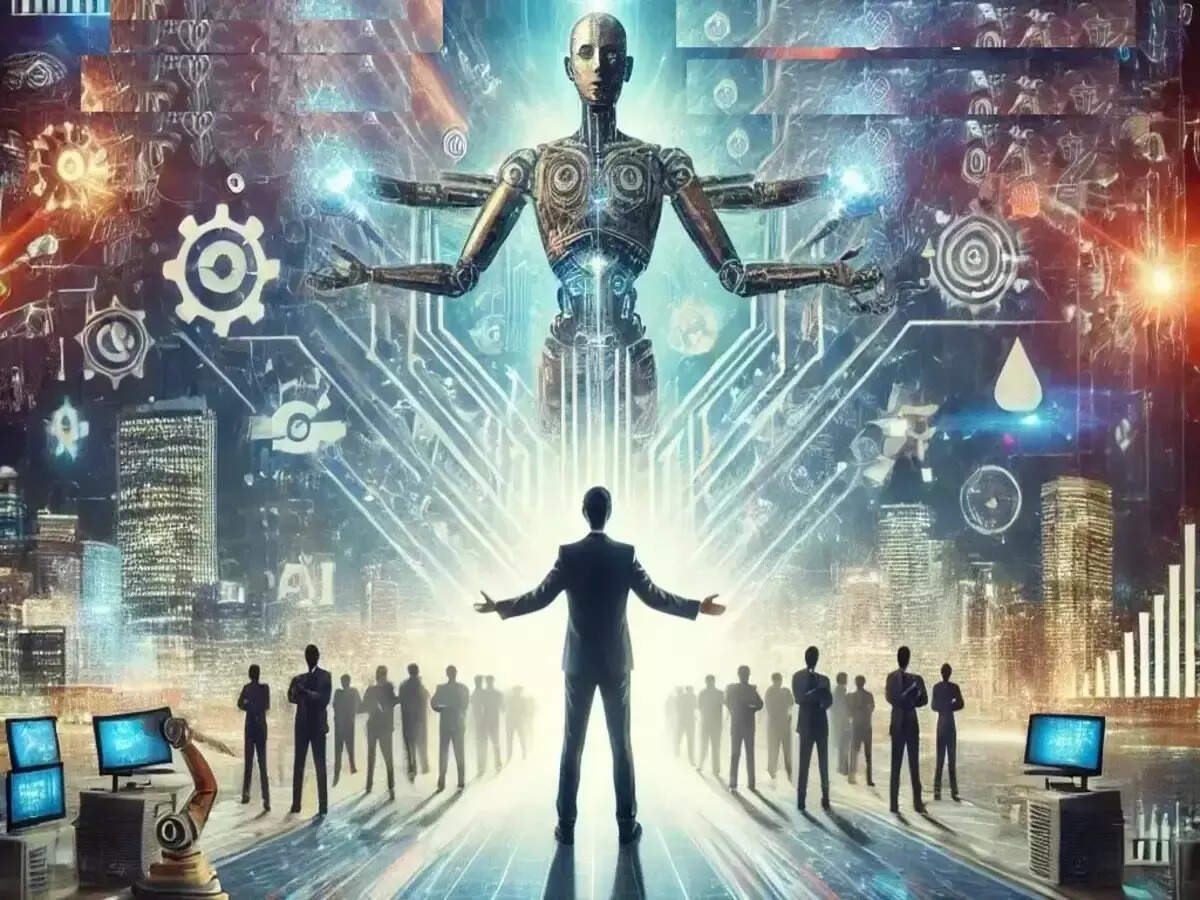
The Economic Survey 2024-25 highlights that Artificial Intelligence (AI) will have a profound impact on India’s labor market due to the country’s vast size and relatively low per capita income.
While AI promises efficiency and productivity gains, unregulated and insensitive adoption could lead to widespread job displacement, hurting India’s growth potential. The Survey warns that corporations must adopt AI responsibly, or the state may be compelled to introduce fiscal measures such as taxing profits generated from replacing human labor with technology.
At the same time, the Survey calls for proactive collaboration between the government, private sector, and academia to ensure that AI-driven productivity gains are widely shared. This dual approach—embracing AI while safeguarding employment—demands a balanced, well-regulated strategy to harness AI’s potential without exacerbating inequalities.
The Need for Responsible AI Adoption
AI is a double-edged sword. While it significantly enhances productivity, decision-making, and innovation, it also threatens jobs across industries. Sectors like media, BPO services, and software have already experienced job losses due to AI automation, with new employment opportunities failing to keep pace.
Given this reality, governments worldwide are exploring ways to regulate AI’s impact, including measures such as a ‘Robot Tax,’ as hinted at in the Economic Survey. The idea is simple: if businesses reap higher profits by replacing human workers with AI, a portion of these gains should be reinvested in retraining and upskilling displaced workers.
The Benefits of AI: Beyond Automation
Despite concerns over job displacement, AI offers undeniable advantages. It enables businesses to complete tasks with greater efficiency and lower costs, freeing up human workers for more strategic and creative roles. AI-powered analytics enhance decision-making, allowing businesses to stay competitive. The technology has also fueled the rise of new industries, leading to job creation in emerging AI-driven fields.
In healthcare, AI has revolutionized diagnosis and treatment, enabling personalized medical services. Meteorologists now predict weather patterns with greater accuracy, while AI-driven energy management systems optimize consumption. In short, AI is transforming industries in ways that improve human life—provided it is implemented responsibly.
AI and the Employment Challenge
While AI’s benefits are evident, its biggest casualty is employment. Industries that once relied on human labor are increasingly shifting to AI-powered systems. In media and entertainment, AI-generated content reduces the need for human writers and editors. Call centers now rely on AI-driven bots instead of human agents. Factories automate production lines, minimizing human intervention. Even personal assistants are being replaced by AI-driven virtual assistants.
This raises legitimate concerns about future job losses. However, history has shown that while technology disrupts existing jobs, it also creates new employment opportunities. The key lies in managing this transition effectively. Rather than resisting AI, India must focus on reskilling its workforce to meet the demands of an AI-driven economy. This requires forward-thinking policies that regulate AI’s adoption while fostering new job opportunities.
Building a Robust Digital Infrastructure for AI
Given AI’s transformative potential, India must invest in a strong public digital infrastructure to facilitate AI development and integration. Several key elements are essential:
High-Speed Internet – A seamless flow of data is crucial for AI applications. With India already having the world’s second-largest mobile network and some of the cheapest data rates, the foundation is strong.
Data Infrastructure – Secure, high-quality data collection, storage, and processing mechanisms are necessary for AI advancements while ensuring privacy and security.
Cloud Computing – Scalable and on-demand access to computing power will drive AI innovation.
Indigenous AI Platforms – Developing open-source or proprietary AI platforms will reduce dependency on foreign technology.
Cybersecurity Framework – Protecting AI systems from cyber threats is essential for ensuring trust and stability.
Digital Literacy Programs – Educating citizens, businesses, and policymakers about AI’s benefits and risks will ensure its responsible adoption.
A Balanced Approach: Development and Regulation
AI must be promoted, but not at the cost of social equity. A well-regulated AI ecosystem can drive growth while ensuring that employment opportunities remain accessible. This calls for a dual policy: fostering AI development while mitigating its adverse effects on jobs.
The debate over a ‘Robot Tax’ underscores this challenge. Some argue that taxing AI-driven profits may slow innovation. However, ignoring job displacement risks social unrest. The government must find a middle path—encouraging AI adoption while ensuring displaced workers are retrained for new roles.
Investing in education, vocational training, and AI-driven job creation will be crucial. Businesses benefiting from AI, robotics, and automation must contribute to this effort, ensuring that India’s youth are equipped for the jobs of the future.
In the AI era, growth and equality must go hand in hand. By embracing AI with a human-centered approach, India can ensure that technological progress benefits society as a whole.
(The author is Ex-Professor, PGDAV College, University of Delhi; Views expressed are personal)


